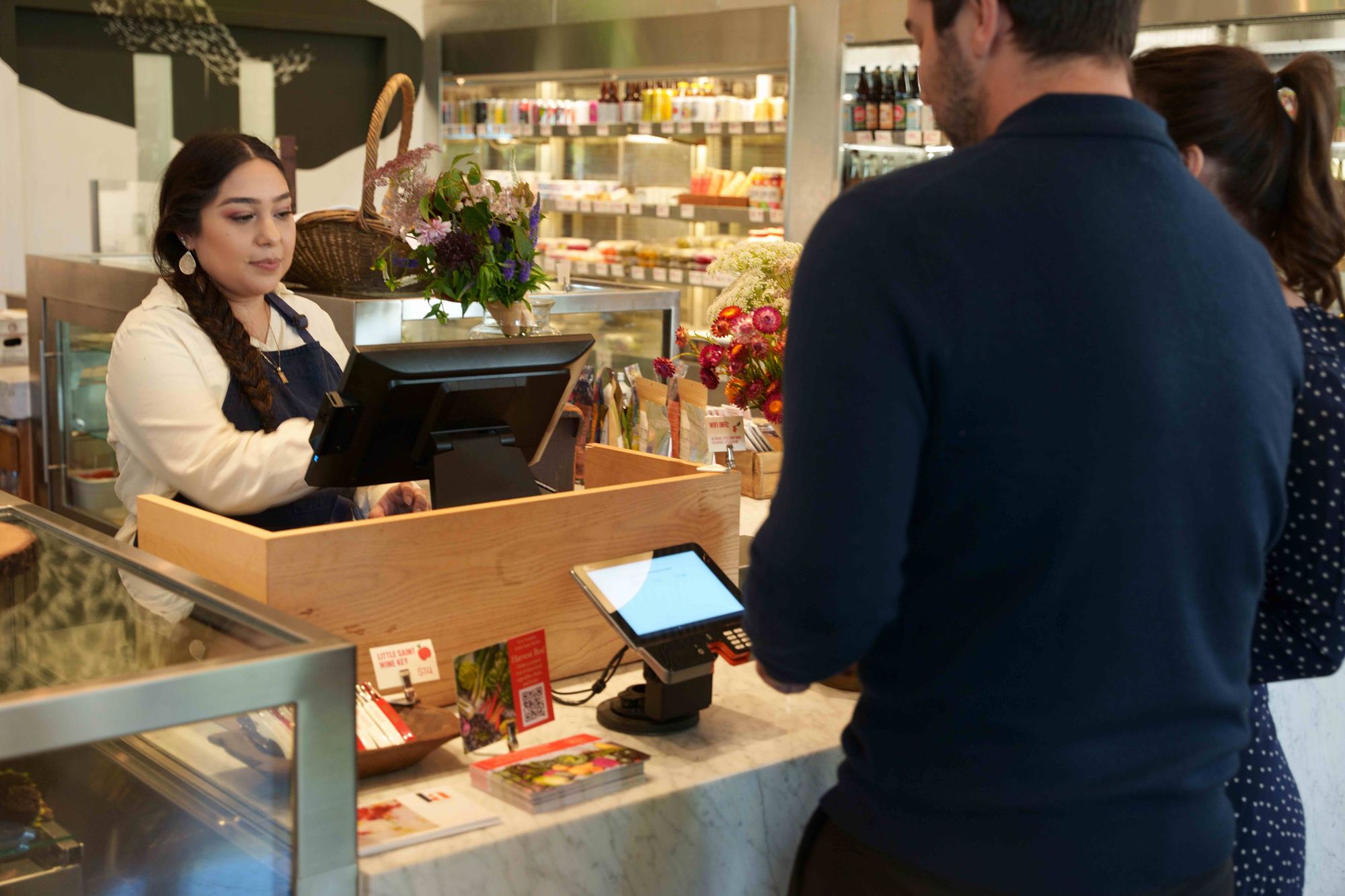When opening a restaurant, it's easy to underestimate the amount of planning needed to get started. But every detail matters. And the most successful restaurateurs are aware of them all. So, while lighting, music, and interior design are important for distinguishing yourself from your competition, there are certain decisions you can't afford to miss before opening.
Far too often, young chefs just want to cook. Or foodies quit their day job to follow their passion. But in the end, they struggle to make a profit. Instead, the focus should be on choosing a concept and researching locations. And don’t bother launching a new restaurant if you haven't raised enough capital or developed a plan for profitability. Those are critical to your success. On top of that, choosing a tech stack that works best for your business and developing positive relationships with vendors rounds out the most important factors you need to consider before opening your new restaurant.
Below we have 7 quick tips to consider before starting this journey. To understand all the details needed, consider reading our in-depth guide to opening a restaurant.
1. Create a concept that makes sense
So you want to start a restaurant. Some would consider you brave, others foolish. Judging aside, restaurant owners make up a diverse group of entrepreneurs with many reasons for opening their own businesses. From immigrants bringing flavors from faraway lands to local chefs passionate about ingredients, the restaurant industry has successes and failures regardless of experience or wealth. However, the common thread among the successes is they all have a defined concept. Determining what you sell, how you sell, who you sell to, and at what price is fundamental to your winning concept.
Ask yourself:
- What type of service is most appropriate for your concept? Quick service, full service, ghost kitchen, or food truck?
- Is your market already saturated with your concept, or are you filling a void?
- Who is your audience, and how will they react to your concept?
- Do you have experience preparing your menu, and are the ingredients consistently available?
- Can you hire employees with the skills to prepare your menu and serve guests?
As you consider these questions, remember that the most profitable concepts will attract the right audience, drive repeat visits, and turn guests into raving fans.
2. Build a rock-solid business plan
Identifying your concept is a great start. Now it’s time to get it on paper. Create a mission statement, list objectives, and prepare an overall guide on how you will structure, build, and run your future restaurant here.

Eventually, you must communicate your restaurant concept well to stakeholders and explain how you will pay investors back. If you’re looking for institutional loans from a bank or the Small Business Administration (SBA), they will require a business plan with your application. Writing a business plan does not guarantee success, but it will go a long way toward building a foundation to propel your restaurant to the top of everyone’s favorite restaurant list.
3. Pinpoint your perfect location
Traditionally, choosing a location has been the most important decision in starting a restaurant. But restaurant online ordering systems and third-party delivery apps have changed the game. New business models like ghost kitchens have softened the old notion of location, location, location.
Let your concept determine your area
Some critics of the modern restaurant model would argue that these new trends require research into demographics, competition, and growth potential of your location. Nonetheless, your concept will drive this decision process more than anything. Want to start a farm-to-table restaurant? Consider a location near the farm with plenty of parking. Love making sandwiches? Look at the real estate near office buildings or schools to maximize the lunch day part of your target market.

Go where your guests are
High visibility and easy parking in populated areas are fantastic ways to ensure steady traffic of diners for most restaurants regardless of the concept. Class A real estate can be a tempting place to start, but corner locations in trendy neighborhoods are usually too expensive for first-time owners. Some restaurant strategists suggest locations that are near established businesses or collectively make up a cuisine type (Little Italy) or style of service (Food Hall). Consider locations where potential customers are already dining rather than attract them to areas that are off the beaten path.
Research the demographics
Geography, lifestyle, and family status are demographics that could play a bigger role than you think when considering your location. Seafood restaurants in landlocked states can pose financial and supply chain challenges when sourcing fresh fish. Starting a greasy spoon diner in an active and health-conscious neighborhood may be a turnoff to those who prefer to stay fit. However, a family-style restaurant with large portions and a kid’s menu at value menu pricing is a great concept in the suburbs inhabited by families with children. Again, relying on your concept and stating it clearly in your business and marketing plan, will guide the decision-making process and narrow your location choices.

Opening a Restaurant: The Ultimate Guide for New Restaurant Owners
See what it takes to get your concept up and running successfully with this comprehensive 12-step playbook for opening a restaurant.
4. Get the capital you need for success
Restaurants and bars are more expensive than ever as building materials, contractors, and permits have increased in cost dramatically over the past decade. Furniture, equipment, and starting inventory can add up quickly and become an expensive endeavor even for the experienced restaurateur. After considering a concept, writing a business plan, and choosing potential locations, getting capital is your next priority. How much money do you need? Where will it come from? Should you get a partner to help finance it? If you don’t succeed, how will your personal finances be affected? These are all serious questions to consider before opening your new venture and, likely, you have already performed this exercise.

Not sure where to start looking for capital? Consider these sources:
Friends and family
Many first-time small business owners will rely on their friends and family to get things started. Finances aside, they will be your biggest fans from the very beginning and will be a great asset when telling your story and increasing brand awareness. On the flip side, a lack of transparency or misrepresenting the true cost of opening a business could put you in jeopardy of ruining family and friend relationships. Be honest about your abilities to manage the business and always share financial updates after opening.
Loans and grants
While there are many advantages to relying on your inner circle, it’s possible they won’t have all the funding you need to open. Diversification of funding is a well-known path to reaching your capital goals, so consider applying for SBA loans, commercial bank loans, or apply for municipal grants when available. The SBA has long been a source of financing and offers guaranteed loans at competitive pricing along with education and resources to support your venture and help run your business.
National and local banks provide financing to small businesses, of course, but they require collateral and business experience to be considered for application. Small business loans and grants can be found at government agencies, small business development centers, and nonprofit organizations, and can be a great way to fill in the gap toward reaching your fundraising goals.
Another alternative is a working capital loan for small businesses through your point-of-sale provider, like SpotOn Capital. It's a small business loan that's easy to apply for, offers a fixed fee as a percentage of your loan, and is automatically paid back from your credit card sales. Many restaurants choose this type of loan for its speed and convenience over traditional bank loans.
Crowdfunding
Pitching investors, applying for bank loans, and asking your family for money can have limitations and may not get you enough funding. Crowdfunding is a strategy that focuses on raising a smaller amount of money from a large collective of individuals. “Backers” as they are often called, receive incentives in exchange for their support.
From pre-opening dinner parties to discounts after opening to access to special events, there are many ways to entice groups of people outside of your inner circle that are excited about your new restaurant and want to be early supporters. The most successful crowdfunding projects come from up-and-coming chefs, bakers, sommeliers, and mixologists that are ready to start their own projects. But if you're new to the industry, you may find this source to be challenging due to a lack of experience.
5. Plan your path to profitability
Many businesses will include a proforma along with their business plan to show their path to profitability. If you’re an experienced restaurant manager, you likely have an understanding of how operations, scheduling, and purchasing work and the industry-wide target cost percentages. But, what about your fixed and mixed costs? Negotiating a long-term lease, shopping for worker’s compensation insurance, and determining utility costs might have all been established before being hired as a manager. Taking on the ownership role brings new responsibilities, so make sure to do your research and ask the right questions.

After determining all of your fixed and mixed costs, use a break-even point calculator to begin planning your path to profitability. Don’t forget variable costs and monthly sales are needed to complete the formula, which is typically calculated in the concept and location planning stages. But, remember that we are not chasing the break-even point. What’s the point of going into business if you don’t or can’t make profits? Stay laser-focused on your concept, operate within your budget, and use data from your tech stack to make good business decisions and stay on the path to profitability.
6. Integrate tech into your restaurant
From concept creation to proofing your proforma, technology must be considered at every stage of your plan. Hundreds of companies have started over the last 15 years, and many have developed software that makes restaurateurs' lives easier. Saving time and money can free them to focus on their true passion—the concept. Choosing a tech stack that is fully integrated will streamline your operations and give you high-level and drilled-down views of your restaurant business plan all in one place.

While there are many solutions on the market, here are the must-haves:
Point-of-sale
Every restaurant—regardless of its type—needs a restaurant POS. Your concept and location will dictate which kind of hardware and software you need, but running a restaurant without a POS is not an option. After determining which system is best for your type of service, tracking the people that drink and eat at your restaurant is a must.
Guest engagement
If you’re starting a full-service establishment, a restaurant reservation system, like SpotOn Reserve, will allow you to collect names, phone numbers, and email addresses to use for marketing purposes later. And for counter-service operations, owners can take advantage of customer loyalty software like SpotOn Loyalty. It gives quick service and fast casual restaurants the ability to collect guest data and offer special items or discounts to their loyal fans.
Labor management
Running a restaurant requires staff coordination, so picking labor management software that integrates with your POS is an absolute must. A good platform will make light work of scheduling your employees, speed up payroll with a direct sync to your POS, and automate tip distribution to your support staff.
COGS management
Controlling your overall spending on food and beverage is one thing. Identifying your costs on a line item basis, tracking them over time, and changing your menu prices or availability of items is a completely different story. While there are many solutions in this category, make sure you choose one that can integrate with your POS to automate back-office functions, save time calculating inventory, and get the reporting data you need in a flash. Also, by integrating your POS reporting with inventory, you can build your most profitable menu with restaurant menu engineering.
7. Establish vendor relationships
Most people open restaurants because they’re passionate about food, beverages, and creating memorable experiences, not for writing business plans or building tech stacks. Whether you’re buying raw ingredients or reselling wholesale items, it’s important to begin building positive relationships with your vendors. Price fluctuations, supply chain issues, and mishandled shipments are going to happen, so pick vendors that are flexible and have great customer service.

Remember, this is a two-way street. Paying your bills on time and getting to know your delivery drivers will go a long way. Most importantly, pick the vendors that deliver, have the right product catalog for your menu, offer multiple ways to order, extend credit and payment terms, and sell products at a reasonable price.
Pay attention to detail and do it
Launching a new restaurant is a massive undertaking with hundreds of decisions to consider and execute to be successful. Fancy decor, expensive real estate, and overblown marketing budgets won’t always put you on the Best Restaurants list. Careful planning, attention to detail, and passion for the business are the recipe for success. Go out and make the restaurant of your dreams. Just be sure to have enough money, create a path to profitability, and invite SpotOn to the grand opening party.













